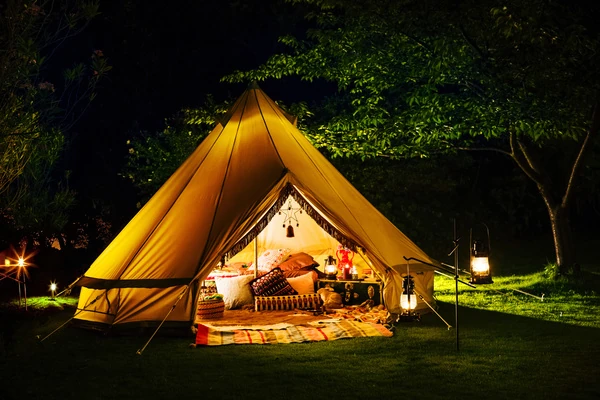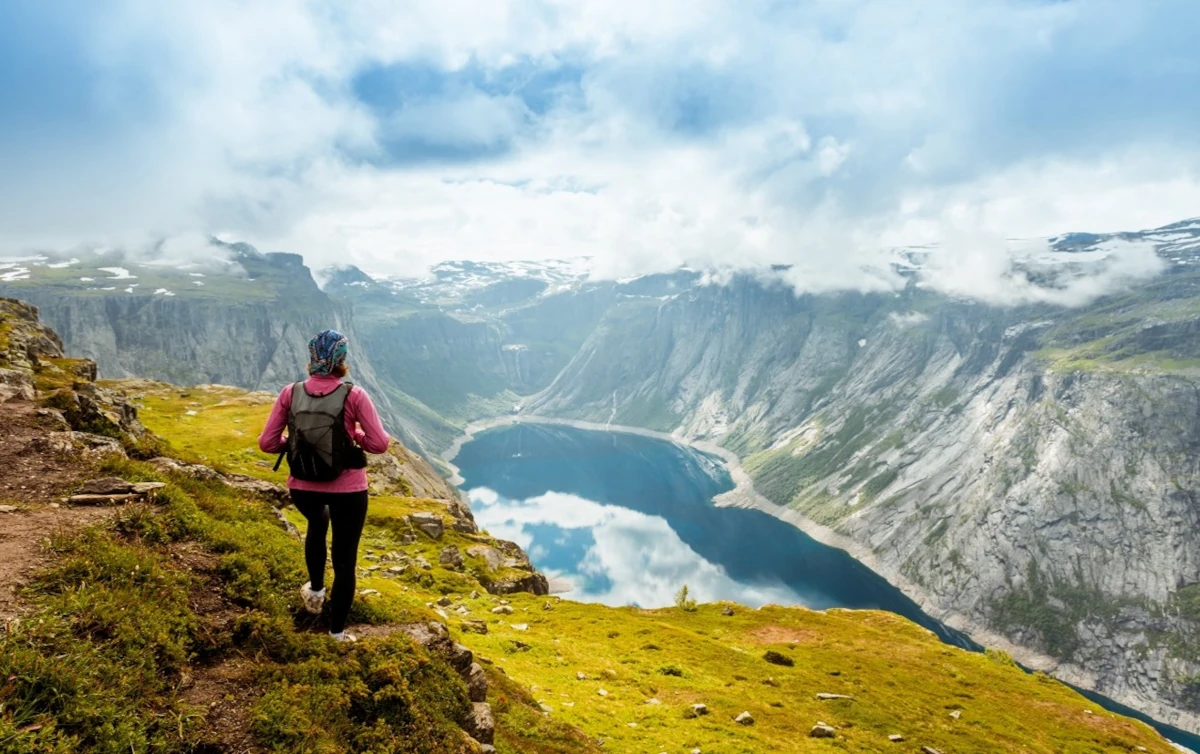Exploring the great outdoors has never been more thrilling and accessible, thanks to the wealth of information now available to adventure seekers.
The 2024 Outdoor Adventure Guide is your comprehensive resource for embarking on unforgettable journeys, providing essential insights into outdoor adventure activities, gear, and safety.
With an emphasis on sustainability and respect for nature, this guide underscores the importance of being well-prepared for your adventures, whether you are hiking through untouched forests or camping under starlit skies.
Essential preparation paves the way for enriching experiences that connect us more deeply with the natural world.
Within the pages of this guide, you will find detailed sections on Planning and Preparation, including tips on how to choose the right backpacks and sleeping bags, and advice from seasoned Adventure travel guides.
The Essential Gear and Equipment section will equip you with knowledge about the latest in outdoor gear and equipment, ensuring you have everything you need for your journey.
As you set out, this guide offers comprehensive exploration tips, from hiking and backpacking tips to wilderness survival tips.
Dealing with Challenges highlights how to navigate the unpredictable elements of outdoor adventures, ensuring that you are well prepared for anything the wilderness may throw your way.
Finally, it wraps up with a conclusion that aims to inspire further exploration and responsible enjoyment of the outdoors, complete with insights from adventure tour operators and advice on camping and outdoor safety.
This Outdoor Adventure Guide is your ultimate handbook for embracing the adventures that lie ahead in 2024, equipping you with the knowledge and confidence to explore the beauty of the great outdoors.

Planning and Preparation
Setting Your Objectives
When embarking on any outdoor adventure, defining clear objectives is crucial.
One should consider what one aims to achieve, whether it is summiting a mountain, exploring a remote wilderness area, or challenging oneself physically and mentally [1].
Setting objectives not only provides direction but also helps in measuring the success of the adventure.
Researching Your Destination
Thorough research is essential for understanding the destination’s terrain, climate, and other relevant factors [1].
Utilising a variety of resources such as guidebooks, maps, and online forums is recommended.
Engaging with local experts or communities can provide invaluable insights that are not readily available through conventional sources [2].
Creating a Budget
Effective budgeting is key to planning a successful outdoor adventure.
Start by categorising your past month’s expenses to identify potential savings that could fund your adventure [3].
Consider all potential costs, including travel, accommodation, gear, and unexpected expenses, to ensure a financially feasible trip. Regular financial check-ins can help stay on track with your budget goals [3].
Selecting the Right Route
Choosing the right route involves understanding the physical demands of the adventure and ensuring it aligns with your fitness level [1].
It is also wise to consider the logistics of the route, including entry points, exit points, and the availability of emergency exits. This ensures a safe and enjoyable experience.
Ensuring Physical and Mental Readiness
Preparing physically and mentally for an outdoor adventure cannot be overstated.
Start a fitness regimen well ahead of your trip, focusing on cardiovascular endurance, strength training, and flexibility [1].
Mental preparation involves setting realistic goals, familiarising yourself with emergency procedures, and being mentally ready to face the challenges of the adventure [4].
By adhering to these structured steps, adventurers can ensure they are well-prepared to face the challenges and enjoy the rewards of their outdoor pursuits.

Essential Gear and Equipment
Hiking Boots
Wearing the right hiking boots can be a success or a failure of your hiking trip.
The evolution of hiking boots has seen a shift towards lighter materials that still provide adequate support and waterproofing, essential for comfort and performance on the trail.
Modern hiking boots are categorised based on their suitability for different seasons, with options ranging from lightweight day hiking boots to more robust designs for rough terrain or heavy loads [5].
Camping Tents
Choosing the right camping tent involves considering its capacity, weather resistance, and portability.
Tents range from lightweight models suitable for backpacking to larger, feature-rich designs for comfortable car camping.
Key features to look for include waterproof rainflies with high hydrostatic head ratings and ample guy ropes for stability.
Multi-room tents with spacious living areas offer enhanced comfort for group and family camping [8]
Backpacks
Backpacks are integral to outdoor adventures, with designs varying significantly based on the activity.
From ultralight packs for fastpacking to larger models designed for extended treks, the right backpack should fit well, offer sufficient volume for gear, and include features like hydration reservoirs and effective load distribution systems [7].
Sleeping Bags
Recent innovations in sleeping bag technology incorporate advanced fibres and environmentally friendly manufacturing processes, offering campers a range of choices from ultra-lightweight bags for backpacking to luxurious, well-insulated models for colder conditions.
Features like temperature ratings, materials, and specific designs tailored to women or budget-conscious campers play a crucial role in the selection process [8].
Portable Camping Stoves
Portable camping stoves have transformed outdoor cooking, with options ranging from compact models suitable for backpacking to larger, more robust designs for group camping.
Features to consider include fuel type, weight, and cooking power.
The best stoves provide a stable cooking surface, efficient fuel use, and reliable ignition systems.
Innovations like integrated cooking systems and multi-fuel capabilities enhance convenience and adaptability in various outdoor settings [8].

Setting Out and Exploration
Navigation Tips
Navigating the wilderness requires a blend of modern technology and traditional skills.
While GPS devices and smartphone apps are invaluable, they should complement, not replace, the use of a map and compass.
Mastering the art of navigation through practical application enhances safety and confidence in remote areas. It is crucial to understand map symbols and topography to navigate effectively.
Additionally, learning to use a compass to follow a bearing or to perform triangulations can pinpoint your location accurately.
Immersing in Nature
Engaging deeply with the environment enhances the outdoor experience.
Activities like hiking, biking, and kayaking not only promote physical health but also allow for an intimate connection with nature. Immersion in natural settings can significantly reduce stress and boost mental well-being.
Forest bathing, or shinrin-yoku, a Japanese practice where individuals immerse themselves in a natural environment like a forest to promote relaxation and overall well-being.
It exemplifies this by encouraging a sensory connection to the forest, fostering both mental and emotional health.
Documenting Experiences
Documenting outdoor adventures enriches the experience and preserves memories.
Utilising photography, video recording, or keeping a travel journal are effective ways to capture the essence of the journey [11].
These records not only serve as personal keepsakes but also help share the beauty of nature with others, potentially inspiring them to explore and appreciate the outdoors [11].
Safety Precautions
Safety is paramount when exploring the outdoors.
Preparing a detailed safety plan, including potential hazards and emergency procedures, is essential. Carrying the right gear, understanding the weather, and having a plan for wildlife encounters are crucial steps to ensure safety.
Regularly updating your knowledge and skills in first aid and rescue techniques can make a significant difference in handling unexpected situations.
Dealing with Challenges
Overcoming Weather Obstacles
Overcoming weather challenges is crucial for a successful outdoor adventure.
To tackle unexpected weather conditions, adventurers should always check the most accurate and updated weather forecasts using reliable sources
However, due to unpredictable weather patterns possibly caused by climate change, it is wise to have contingency plans.
Suitable clothing and gear, such as waterproof jackets and sturdy footwear, are essential to ensure comfort and safety in adverse weather conditions.
Navigating Difficult Terrain
Navigating through challenging terrain requires proper preparation and the right equipment.
High-quality, waterproof boots with good ankle support are essential for stability and protection.
Adventurers should plan their route meticulously, considering the landscape, weather, and potential hazards.
Knowledge of traditional navigation tools, such as maps and compasses, is invaluable, especially in areas where GPS may fail.
For safety, always inform someone about your travel plans and expected return.
Maintaining Mental Resilience
Mental resilience is key to overcoming the physical and emotional challenges of outdoor adventures.
Developing a resilient mindset involves positive self-talk, setting realistic goals, and visualisation techniques.
It is important to acknowledge that resilience is not a static trait but can be developed and strengthened over time through experiences and coping strategies.
Engaging in nature-based activities can also enhance emotional well-being and fortify mental resilience.
By embracing these strategies, adventurers can enhance their ability to deal with challenges effectively, ensuring a rewarding and safe experience in the great outdoors.
Conclusion
Throughout this guide, we have journeyed through the essentials of outdoor adventures, covering everything from the initial planning and preparation to facing and overcoming the challenges that nature may present.
Each section was meticulously designed to equip you with the knowledge and skills necessary for a safe, fulfilling, and respectful encounter with the wilderness.
We delved into the technicalities of selecting the right gear, navigating through difficult terrains, and fostering a deeper connection with nature, all while emphasising the importance of sustainability and preparedness.
The adventures that await in 2024 are boundless, and with this guide, adventurers are better positioned to explore the beauty and challenges of the great outdoors responsibly.
Remember, the key to a rewarding experience lies in careful preparation, respect for nature, and an open-minded embrace of the adventures that lie ahead.
For those eager to dive deeper into the subject or seek further inspiration, check out our related articles below.
Let this guide be the stepping stone to your next great outdoor adventure, where the learnings here pave the way for unforgettable experiences amidst the natural world.
Related articles:
- The Best Camping Lights: A Definitive Guide to Brighten Up Your Nights
- Discover The 10 Best Outdoor Camping Chairs For Your Next Adventure
- Discover 10 Best Camping Beds For a Comfortable Outdoor Adventure
- Luxury Camping Tents: Discover The Perfect Blend of Comfort and Adventure
- Why a Luxury Camping Tent is a Must-Have
- 10 Best Luxury Camping Tents: Elevate Your Outdoor Experience With Comfort And Style
Frequently Asked Questions:
To plan a successful outdoor adventure, start by setting clear objectives to guide your preparations.
Research your destination thoroughly, considering the terrain, climate, and local insights.
Create a detailed budget that includes all potential costs. Choose a route that matches your fitness level and logistical needs.
Finally, ensure you are physically and mentally prepared for the challenges ahead.
For a hiking trip, essential gear includes well-fitted hiking boots, a suitable backpack, a reliable tent, a comfortable sleeping bag, and a portable camping stove.
Make sure your hiking boots are appropriate for the terrain and weather. Your backpack should have enough capacity and features like hydration reservoirs.
Choose a tent that meets your needs for capacity and weather resistance.
Opt for a sleeping bag that is suitable for the expected temperatures, and a camping stove that is lightweight and efficient.
To navigate the wilderness safely, use a combination of modern technology and traditional navigation skills.
GPS devices and smartphone apps are helpful but should complement the use of a map and compass.
Practice reading maps and using a compass to ensure you can navigate effectively even without electronic aids.
Understanding map symbols and topography is crucial for accurate navigation.
Dealing with unpredictable weather involves checking accurate and updated forecasts before your trip and having contingency plans in place.
Pack appropriate clothing and gear, such as waterproof jackets and sturdy footwear, to stay comfortable and safe in adverse conditions.
Be prepared to adjust your plans based on weather changes and always prioritise safety.
Building mental resilience involves setting realistic goals, practising positive self-talk, and visualising success.
Recognise that resilience can be developed over time through experiences and coping strategies.
Engaging in nature-based activities can also enhance your emotional well-being and strengthen your mental resilience, helping you cope with the physical and emotional challenges of outdoor adventures.
Safety precautions for outdoor exploration include preparing a detailed safety plan, understanding potential hazards, and knowing emergency procedures.
Carry the right gear, stay informed about the weather, and plan for wildlife encounters.
Regularly update your first aid and rescue skills. Inform someone about your travel plans and expected return, and always have a way to communicate in case of emergencies.
Affiliate Declaration:
The use of affiliate links on this website may result in earning a small commission for any purchases made, at no additional cost to you (the user). Please review our privacy and cookie policy, as well as our affiliate disclaimer.


